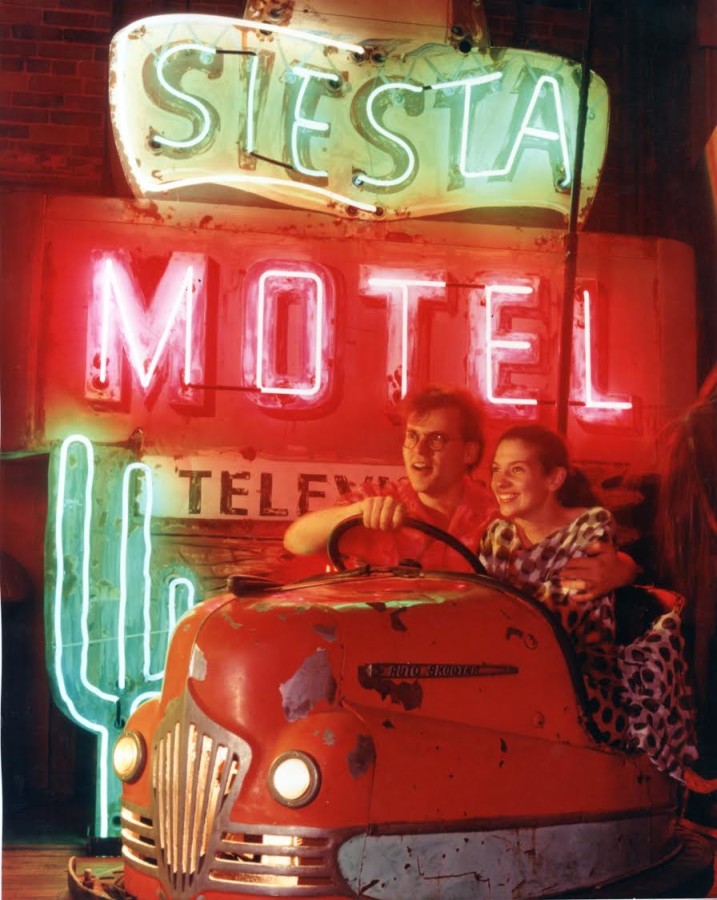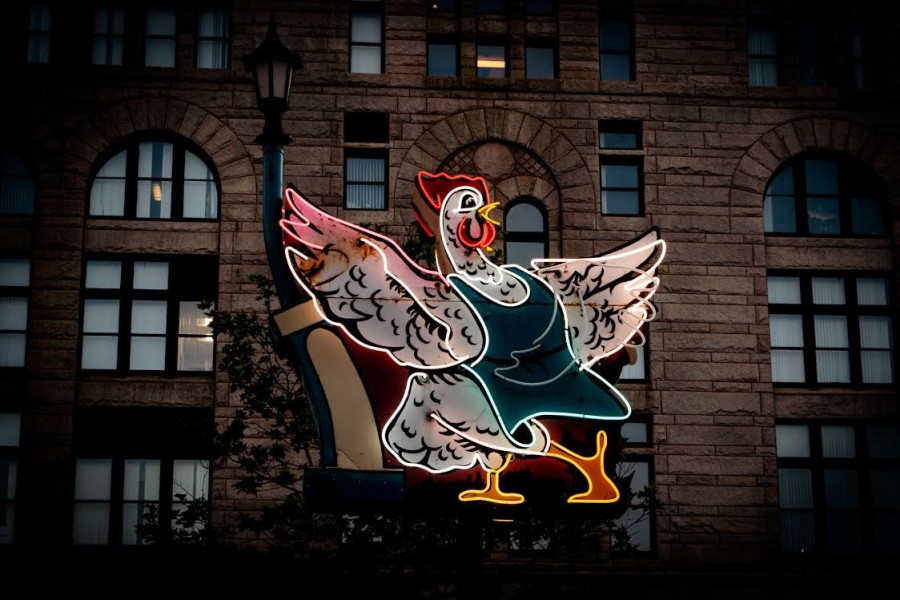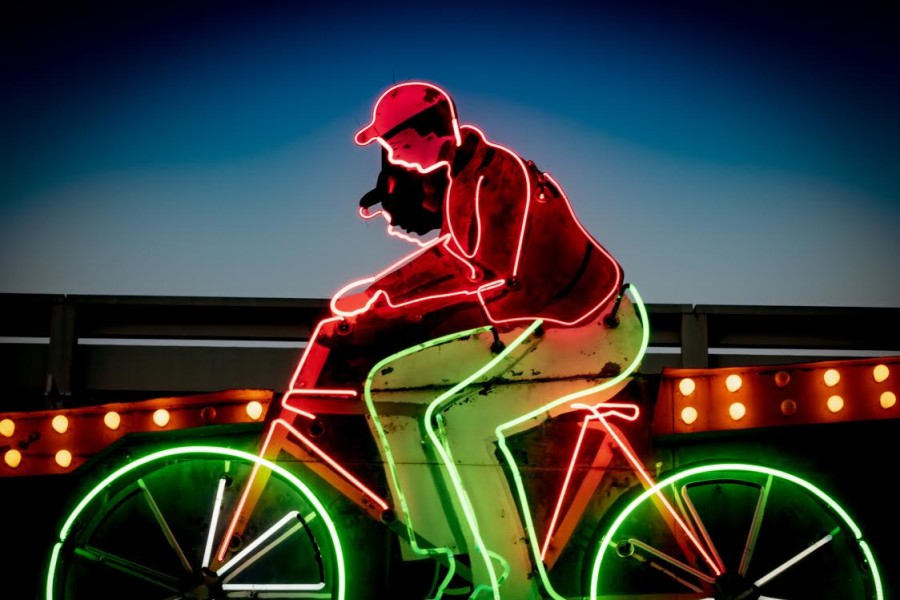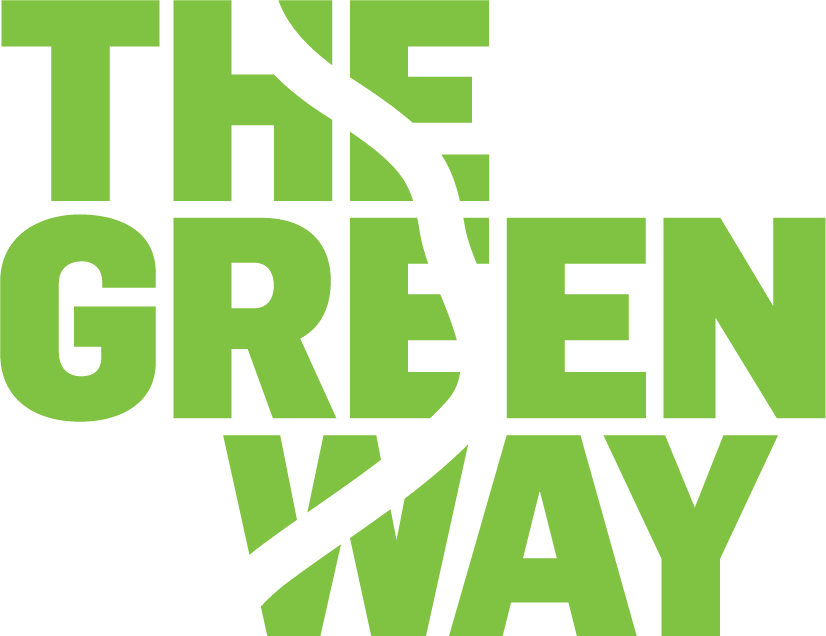Written by Victoria Solan, Consultant Historian for GLOW
“If you haven’t got a sign, you haven’t really got a business,” the entrepreneur Dave Waller told me as I began the research process for GLOW’s interpretive materials. As I delved further into the history of Fontaine’s Chicken, the Flying Yankee Diner and the other small family businesses showcased on The Greenway this summer, Waller’s assertion rang true.
Each sign is the glowing embodiment of one person, family, or business group’s ambition, focus and energy; each one a testimony to the distinctive identity of Bay State entrepreneurship. Waller, who owns and runs the visual effects company Brickyard VFX, has long been drawn to commercial ephemera: he started collecting small tin business signs at the age of nine. In his twenties, armed with a rusty pickup truck, he began acquiring the old neon signs that were then out of fashion and destined for the scrap yard. Together, Dave and his wife, graphic designer Lynn Waller, have amassed one of the largest and most significant collections of neon signs in America.

Courtesy: Dave & Lynn Waller
The Wallers live in an old firehouse in Malden and they have been living and working among most of the signs in GLOW for decades. In fact, the Siesta Motel sign was one of the first large-scale neon signs in their collection. As they added to the collection, the Wallers mounted most of the signs on the interior walls of their home. Seeing the signs on The Greenway, Dave marveled, allows all of us to see them as they were originally intended to be seen. Unlike the predictable backlit panels used to advertise big box stores today, the “crazy cool shapes” of neon signs like the Siesta sombrero or Fontaine’s Chicken pop brilliantly against the night sky. (And yes, Dave confided, the walls of his house do feel rather bare without the enormous signs).

Credit: Rich Colicchio
Significant restoration work was required to get all eight of the signs in GLOW operational again. Both Dave and Lynn put in an enormous amount of work wiring, welding, and coordinating the replacement of broken glass tubing. The tubing was restored by the last working neon shop in Boston, Neon Williams, which has ties back to the venerable CITGO sign. Most of the signs required structural bracing, a feat accomplished by SignArt in Malden, which also installed the signs on the Greenway. For Dave, there is simply no competition between neon and other forms of illuminated signage. Neon alone has a mysterious, alluring glow, a magic which has never been duplicated in other light media. Neon, he points out, draws you in rather than casting light out on the world around it. In the dark, each neon sign is a world unto itself. The illusion created by neon in the dark makes it possible to believe, even just for a second, that a giant bicyclist is pedaling in the sky above Route 9 in Needham, or that a Southwestern escape might plausibly exist by the side of the Saugus Strip.

Credit: Rich Colicchio
Both Dave and Lynn have enjoyed the thrill of discovering new signs in their travels, especially in New England, but also in other regions such as the Pacific Northwest or American Southwest. The Waller’s collection is a testament to the creativity and energy of New England entrepreneurs. As Dave pointed out, in Boston you don’t even have to have a car to enjoy neon signage: you can walk around GLOW. Or, try a mosey around downtown Lynn, or even view the restored American Airlines logo inside Terminal B at Logan Airport . However you choose to explore the world around you, neon offers the thrill of the unexpected.



